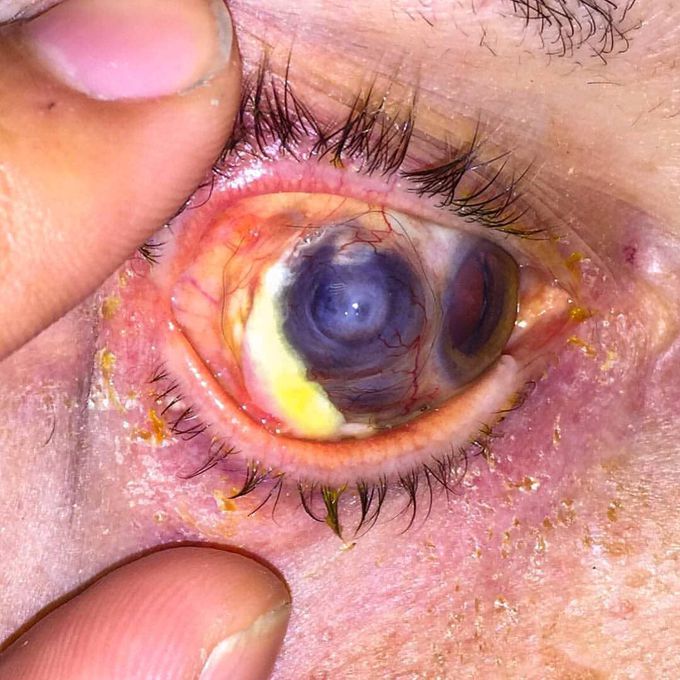


Case of scleromalacia perforans!
Anterior necrotizing scleritis without inflammation, so called scleromalacia perforans, is a rare, severe eye disorder developing on autoimmune damage of episcleral and scleral performing vessels, seen in advanced rheumatoid arthritis (RA), usually in females. In contrast to necrotizing scleritis with inflammation, the eye is not painful. The condition is characterized by the appearance of yellow to grayish patches on the sclera that gradually develop a necrotic slough or sequestrum which eventually separates from the underlying sclera, leaving bare choroid, covered by a thin layer of fibrous tissue or conjunctiva. Progression can be prevented if treatment is instituted early. An initial characteristic finding on slit-lamp examination is a reduction in the number and size of vessels in the episclera surrounding the sequestrum, giving porcelain-like appearance. These vessels anastomose with each other and sometimes cross the abnormal area to join with perilimbal vessels. The necrotic process in scleromalacia perforans appears to be caused by arteriolar obliteration as evidenced by FA, as opposed to venular nonperfusion, which is more prominent in necrotizing scleritis. There is no specific and efficient treatment. As it develops on autoimmune abnormalities immunosuppressive therapy is proposed. To preserve globe integrity, scleral patch grafting (both tissues and synthetic materials) with subsequent immunosuppression is performed. Credit: @optometry.case, @eyeadventure.cr

